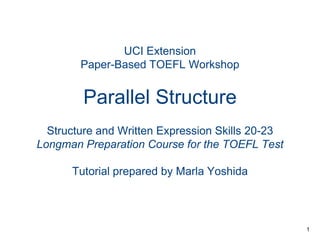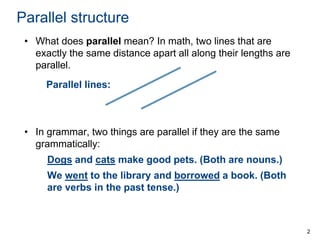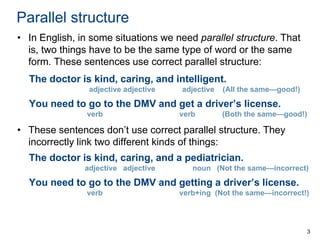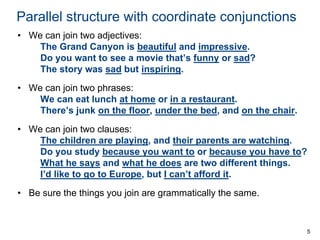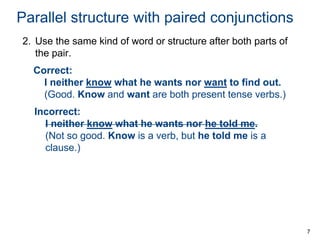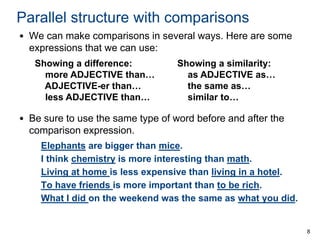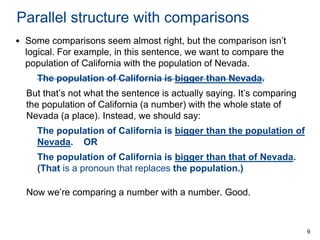This document discusses the importance of parallel structure in writing. It provides examples of parallel and non-parallel structures using coordinate conjunctions, paired conjunctions, and comparisons. Parallel structure requires elements joined by conjunctions or used in comparisons to be the same part of speech or grammatical form. Maintaining parallel structure makes writing clearer and more consistent.
